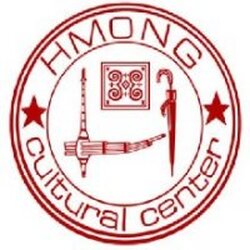Other Online Publications Related to Hmong Studies
Title: What We Know About the Hmong Refugee Crisis of Decades Past and how it Relates to the
Current Syrian Refugee Crisis. Author: Sheila Yingwangkay. Source: The Undergraduate Journal in Politics, Policy, and Society (UJPPS). Year: 2019 Additional Source Information: Pagination: 22 pages. Format: PDF
Abstract: This comparative case study links the current Syria crisis to the historical conflict in Laos during
the early 1960s until the late 1970s. The Central Intelligence Agency’s (CIA) involvement with the Free Syrian Army and the Hmong tribesmen is discussed to fill the gap in literature to understand the importance of their paralleled relationship with the agency and how the United States of America uses the CIA to conceal their involvement in foreign wars. Content analysis using coverage from the New York Times, along with media coverage of Hmong refugees from 1975 to 1990 and of Syrian refugees from 2012 to 2015 will illustrate that major patterns in the Hmong case are similar to Syria’s current refugee crisis. Both Hmong and Syrian refugees experienced chemical warfare from regimes backed by the Russian military. They encounter persecutions when crossing international borders and waterways causing increased civilian mortality. In both cases, regime violence targeted key United States allies and collaborators. This paper argues that the crisis of the two countries is significant to understanding the devastating
impact that developed nations have in developing countries and how its national interest in foreign affairs can lead poor nations to destruction, thus causing a global refugee influx. Most of which is done through proxy wars by recruiting vulnerable local villagers, tribesmen, and rebels to fight. The study therefore concludes that the Hmong case could be a useful benchmark in determining the outcome of Syrian refugees.
Title: Field Guide to Hmong Culture. Authors: Dia Cha, Mai Zong Vue, Steve Carmen (Madison Children's Museum). Source: Madison Children's Museum. Location: Madison, WI. Year: 2004 Additional Source Information: N.A. Pagination: 91 pages. Format: PDF
Abstract: This work provides the reader with an introduction to Hmong history and culture. Topics covered include: Hmong history, clans and lineage, daily life in a Hmong village, Hmong food and farming, Hmong art, wedding and new year's celebrations, shamanism and Hmong religion, Hmong folklore, the Hmong language and Hmong games and recreation.
Title: The Hmong: An Introduction to their History and Culture. Authors: John Duffy, Roger Harmon, Donald A. Ranard, Bo Thao, and Kou Yang Location: Washington D.C. Year: 2004 Additional Source Information: N.A. Pagination: 60 pages. Format: PDF
Abstract: This work is intended to provide an introduction to Hmong culture and history. Topics covered include history, life in Laos, the refugee experience in Thailand, literacy and education, resettlement in the United States, the Hmong language and common Hmong words, phrases and sayings. A short bibliography is also provided.
Title: English-Hmong Handbook for Teaching Hmong-Speaking Students. Authors: Bruce Bliatout, Bruce Downing, Yang Dao, Judy Lewis. Location: Rancho Cordova, CA. Year: 1989. Additional Source Information: N.A. Pagination: 158 pages. Format: PDF
Abstract: (From the Preface); this handbook was developed as part of the Asian and Minority Language Group Project in the Bilingual Education Office, CaliforniaState Department of Education. The project was designed to assist school districts in providing effective bilingual education services to language minority students. The Project Team identified as its first major activity the development of handbooks for a number or Asian and minority language groups.The purpose of these handbooks is to assist school personnel in understanding selected Asian and minority language groups. The hand-books have been designed for use by bilingual education specialists as wellas administrators and teachers who have more general responsibilities forthe education of language minority students.Chapter I and II of this handbook address general background factors regarding the Hmong-speaking language group: immigration history, educational background, and sociocultural factors. Chapters III and IV contain specific information regarding the Hmong language and appropriate program offerings that will promote the academic achieve-ment of Hmong-speaking students.
Title: Bilingual Dictionary of School Terminology, Cov Lus Mis Kuj Txhais ua Lus Hmoob. Authors: Huynh D Te, translated by Lue Vang. Location: Rancho Cordova, CA. Year: 1988. Additional Source Information: N.A. Pagination: 81 pages. Format: PDF
Abstract: (From the Forward): this glossary was prepared to meet a need often expressed by school staff, teachers, teacher's aides, liaison workers, and parents for a bilingual reference work which would include educational terms not usually found in general bilingual dictionaries. It is the hope of the author, Huynh Dinh Te, and the translator, Lue Vang, that this glossary will be useful for them in their educational task and will facilitate the communication between school personnel and Hmong parents.
Title: What We Know About the Hmong Refugee Crisis of Decades Past and how it Relates to the
Current Syrian Refugee Crisis. Author: Sheila Yingwangkay. Source: The Undergraduate Journal in Politics, Policy, and Society (UJPPS). Year: 2019 Additional Source Information: Pagination: 22 pages. Format: PDF
Abstract: This comparative case study links the current Syria crisis to the historical conflict in Laos during
the early 1960s until the late 1970s. The Central Intelligence Agency’s (CIA) involvement with the Free Syrian Army and the Hmong tribesmen is discussed to fill the gap in literature to understand the importance of their paralleled relationship with the agency and how the United States of America uses the CIA to conceal their involvement in foreign wars. Content analysis using coverage from the New York Times, along with media coverage of Hmong refugees from 1975 to 1990 and of Syrian refugees from 2012 to 2015 will illustrate that major patterns in the Hmong case are similar to Syria’s current refugee crisis. Both Hmong and Syrian refugees experienced chemical warfare from regimes backed by the Russian military. They encounter persecutions when crossing international borders and waterways causing increased civilian mortality. In both cases, regime violence targeted key United States allies and collaborators. This paper argues that the crisis of the two countries is significant to understanding the devastating
impact that developed nations have in developing countries and how its national interest in foreign affairs can lead poor nations to destruction, thus causing a global refugee influx. Most of which is done through proxy wars by recruiting vulnerable local villagers, tribesmen, and rebels to fight. The study therefore concludes that the Hmong case could be a useful benchmark in determining the outcome of Syrian refugees.
Title: Field Guide to Hmong Culture. Authors: Dia Cha, Mai Zong Vue, Steve Carmen (Madison Children's Museum). Source: Madison Children's Museum. Location: Madison, WI. Year: 2004 Additional Source Information: N.A. Pagination: 91 pages. Format: PDF
Abstract: This work provides the reader with an introduction to Hmong history and culture. Topics covered include: Hmong history, clans and lineage, daily life in a Hmong village, Hmong food and farming, Hmong art, wedding and new year's celebrations, shamanism and Hmong religion, Hmong folklore, the Hmong language and Hmong games and recreation.
Title: The Hmong: An Introduction to their History and Culture. Authors: John Duffy, Roger Harmon, Donald A. Ranard, Bo Thao, and Kou Yang Location: Washington D.C. Year: 2004 Additional Source Information: N.A. Pagination: 60 pages. Format: PDF
Abstract: This work is intended to provide an introduction to Hmong culture and history. Topics covered include history, life in Laos, the refugee experience in Thailand, literacy and education, resettlement in the United States, the Hmong language and common Hmong words, phrases and sayings. A short bibliography is also provided.
Title: English-Hmong Handbook for Teaching Hmong-Speaking Students. Authors: Bruce Bliatout, Bruce Downing, Yang Dao, Judy Lewis. Location: Rancho Cordova, CA. Year: 1989. Additional Source Information: N.A. Pagination: 158 pages. Format: PDF
Abstract: (From the Preface); this handbook was developed as part of the Asian and Minority Language Group Project in the Bilingual Education Office, CaliforniaState Department of Education. The project was designed to assist school districts in providing effective bilingual education services to language minority students. The Project Team identified as its first major activity the development of handbooks for a number or Asian and minority language groups.The purpose of these handbooks is to assist school personnel in understanding selected Asian and minority language groups. The hand-books have been designed for use by bilingual education specialists as wellas administrators and teachers who have more general responsibilities forthe education of language minority students.Chapter I and II of this handbook address general background factors regarding the Hmong-speaking language group: immigration history, educational background, and sociocultural factors. Chapters III and IV contain specific information regarding the Hmong language and appropriate program offerings that will promote the academic achieve-ment of Hmong-speaking students.
Title: Bilingual Dictionary of School Terminology, Cov Lus Mis Kuj Txhais ua Lus Hmoob. Authors: Huynh D Te, translated by Lue Vang. Location: Rancho Cordova, CA. Year: 1988. Additional Source Information: N.A. Pagination: 81 pages. Format: PDF
Abstract: (From the Forward): this glossary was prepared to meet a need often expressed by school staff, teachers, teacher's aides, liaison workers, and parents for a bilingual reference work which would include educational terms not usually found in general bilingual dictionaries. It is the hope of the author, Huynh Dinh Te, and the translator, Lue Vang, that this glossary will be useful for them in their educational task and will facilitate the communication between school personnel and Hmong parents.


